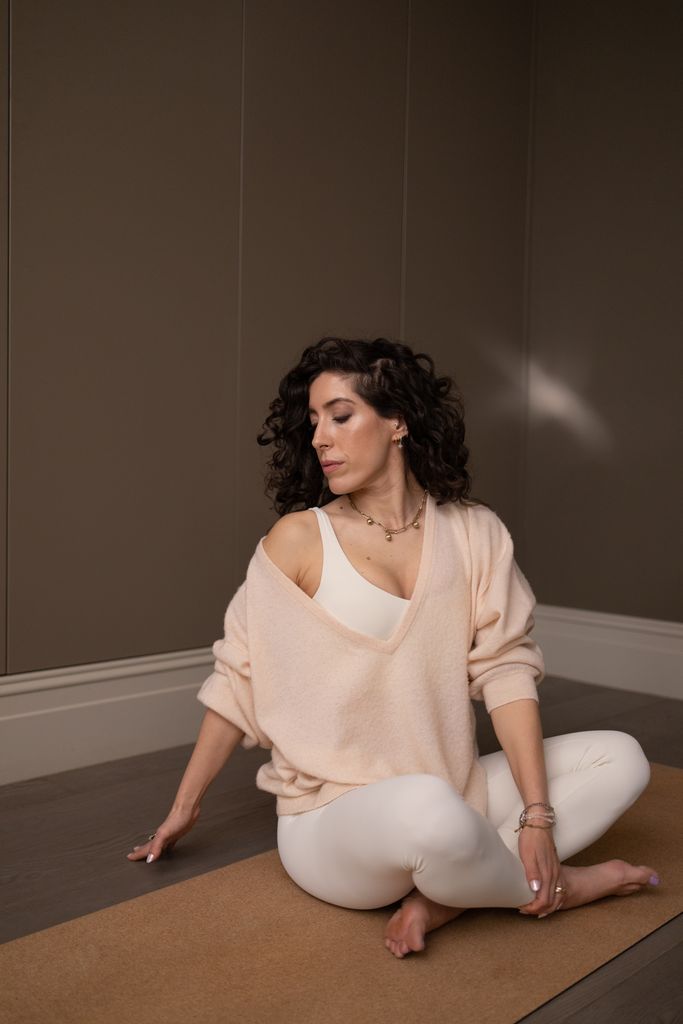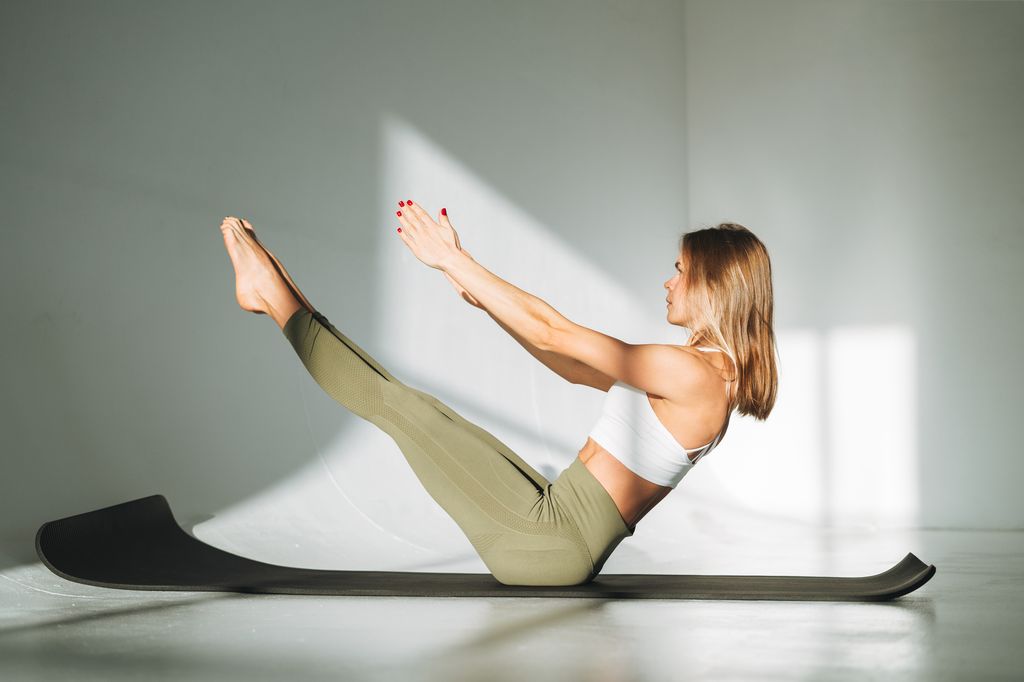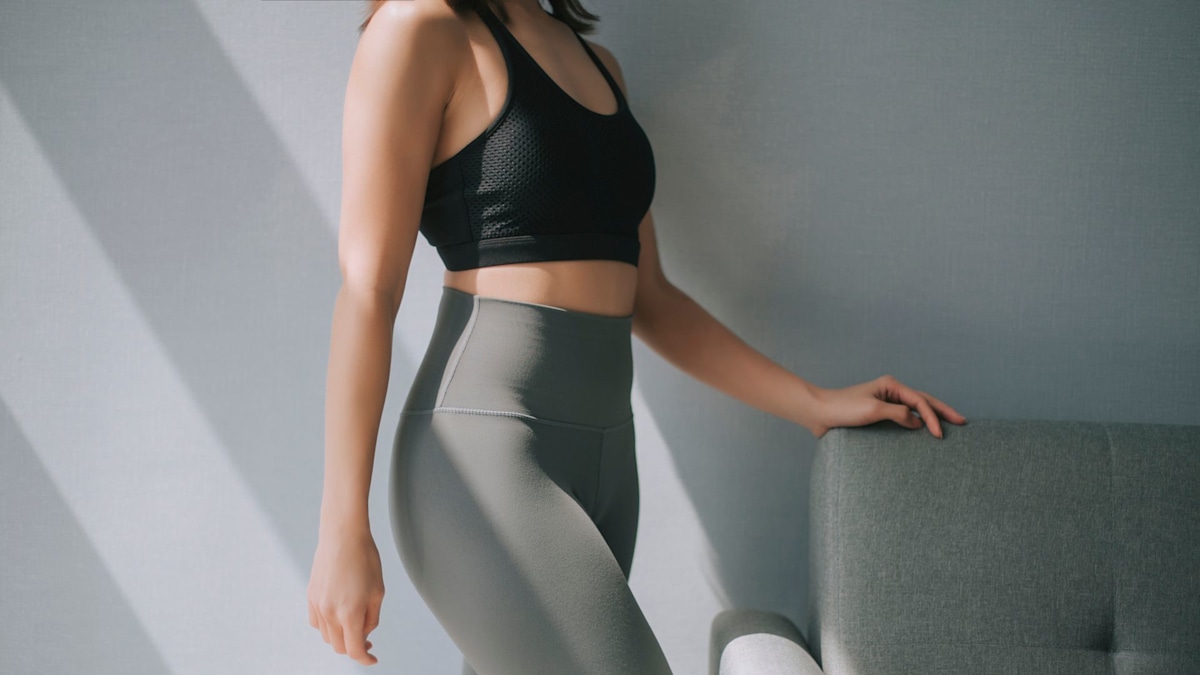As we get older, we naturally lose muscle mass and joint mobility, which can mean our hip muscles, including the glutes, hip flexors and stabilisers, can become tight, leading to weakness and reduced range of motion. When our hips weaken, almost every type of movement can be impacted. “You might notice difficulty getting up and down from the floor, climbing stairs, maintaining balance, or walking for long periods without discomfort,” cautions Pilates teacher Rebecca Dadoun.
On the importance of keeping our hips strong, Rebecca adds: “Stronger hips improve balance, posture, and core stability, making everyday movements feel easier and more controlled. You’ll move with more confidence and power, whether that’s during exercise or simple daily activities such as bending, lifting, or getting out of a chair. In Pilates, we focus on building both strength and mobility in the hips, which not only helps prevent injury but also enhances overall alignment, flexibility, and fluidity of movement.”
If you are struggling with your hips, we’re happy to report that there’s one simple move that can make all the difference, according to Rebecca – you’ll just need to practice it. The hip-easing movie in question? The Pilates leg circle. If you’ve ever been to mat Pilates, you’ll be familiar with the move – and reformer Pilates incorporates it too, just with your legs in the straps of the reformer bed.
 © Cecilia Cristolovean-CsikyRebecca shares her advice for stiff hips
© Cecilia Cristolovean-CsikyRebecca shares her advice for stiff hips
This foundational exercise isn’t just about moving the leg in a circular pattern; it’s about mastering control, strength, and stillness throughout the body, according to Rebecca. By focusing on stabilisation, leg circles build core strength, improve hip mobility, and enhance coordination – making them a go-to move for people seeking to refine their practice and unlock deeper benefits from Pilates.
What are Pilates leg circles?
Pilates leg circles are a full-body Pilates move from the classical repertoire that requires you to disassociate (move a limb without moving the trunk) the leg from the body while moving it in a circular movement. The work is in maintaining stillness through the body.
What are the benefits of Pilates leg circles?
You are strengthening the hip flexors and the leg muscles, but the whole body should be working to stabilise. The core muscles stabilising the body, the still supporting leg active and pressing into the mat and the backs of the arms should be working to help anchor the body down.
 Rebecca is a Pilates expert, and she shares the one move that can ease aching hips
Rebecca is a Pilates expert, and she shares the one move that can ease aching hips
Who are Pilates leg circles best for?
Pilates leg circles are more suited to someone who has practised Pilates for a while. “I’m hesitant to level a leg circle as everyone has different strengths and modifications can always be used with the same results,” explains Rebecca.
 © Getty ImagesPilates is a great addition to your routine to strengthen joints and muscles
© Getty ImagesPilates is a great addition to your routine to strengthen joints and muscles
How to do a Pilates leg circleStart position:
Lie down on your back with your legs extended and pressed into the floor in parallel. Feet flexed.
Arms to your side in a low V; palms pressing down into the mat.
Take one leg and bend your knee into tabletop. Turn the hip out so your knee is angled more towards your shoulder and then lengthen the leg toward the ceiling. Foot softly pointed.
Move:
Inhale: draw the leg across the body.
Exhale: in a sweeping circle, take the leg down, out and back up to the start.
Say HELLO! to your Second Act

HELLO!’s Second Act is a newsletter for women in midlife and beyond. It’s completely free to sign up and is a one-stop-shop for advice and inspiration on the issues our Second Act community have told us matter most: health, relationships, travel, menopause, divorce, careers, finance and more.
Tips and tricks
If you can’t lengthen the leg, simply keep a bend in the knee.
“You want to keep the spine and pelvis still, so only make your circles as big as you can manage whilst the spine is still,” says Rebecca.
“Use the backs of the arms to stabilise and anchor through the leg on the floor. Think about the heel reaching away from the body in the stabilising leg.”
She adds: “Modify if needed. Bend the knee into tabletop and work with this until you build your strength to lengthen the leg. Breath is key. Think about drawing the navel in towards your spine as you fully exhale through the mouth.”
LISTEN: To HELLO!’s Second Act podcast

